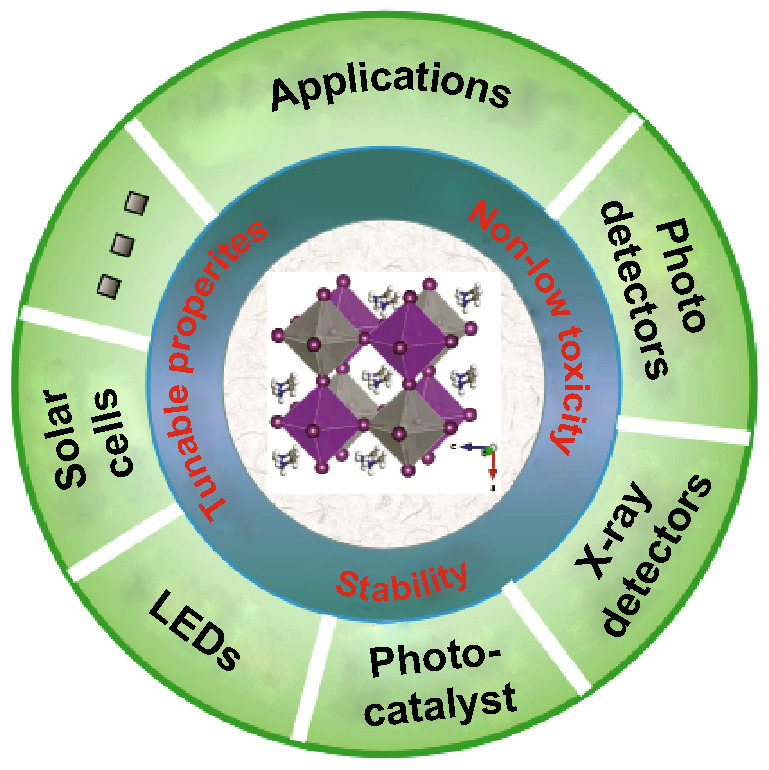- Record: found
- Abstract: found
- Article: found
Lead-Free Halide Double Perovskite Materials: A New Superstar Toward Green and Stable Optoelectronic Applications

Read this article at
Highlights
-
Lead-based halide perovskite materials have revealed excellent properties in optoelectronic applications. However, the material stability and the toxicity of lead still hinder their large-scale commercial applications.
-
Lead-free halide double perovskite materials possess the characteristics of environmental friendliness, exceptional stability and tunable optoelectronic properties.
-
A limited number of halide double perovskites have been synthesized, and extremely few have been developed for optoelectronic applications. Continuing effort is needed to explore more halide double perovskites and modulate the properties for their further applications.
Abstract
Lead-based halide perovskites have emerged as excellent semiconductors for a broad range of optoelectronic applications, such as photovoltaics, lighting, lasing and photon detection. However, toxicity of lead and poor stability still represent significant challenges. Fortunately, halide double perovskite materials with formula of A 2M(I)M(III)X 6 or A 2M(IV)X 6 could be potentially regarded as stable and green alternatives for optoelectronic applications, where two divalent lead ions are substituted by combining one monovalent and one trivalent ions, or one tetravalent ion. Here, the article provides an up-to-date review on the developments of halide double perovskite materials and their related optoelectronic applications including photodetectors, X-ray detectors, photocatalyst, light-emitting diodes and solar cells. The synthesized halide double perovskite materials exhibit exceptional stability, and a few possess superior optoelectronic properties. However, the number of synthesized halide double perovskites is limited, and more limited materials have been developed for optoelectronic applications to date. In addition, the band structures and carrier transport properties of the materials are still not desired, and the films still manifest low quality for photovoltaic applications. Therefore, we propose that continuing efforts are needed to develop more halide double perovskites, modulate the properties and grow high-quality films, with the aim of opening the wild practical applications.

Related collections
Most cited references106
- Record: found
- Abstract: found
- Article: not found
Organometal halide perovskites as visible-light sensitizers for photovoltaic cells.
- Record: found
- Abstract: found
- Article: not found
Electron-hole diffusion lengths exceeding 1 micrometer in an organometal trihalide perovskite absorber.
- Record: found
- Abstract: found
- Article: not found